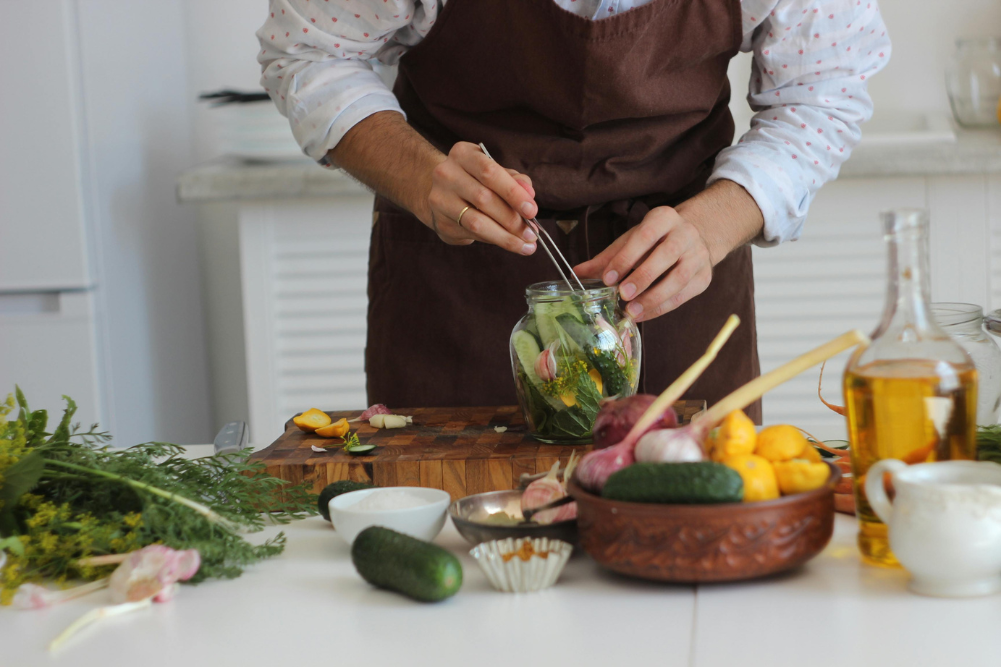Why umeboshi plum is a samurai superfood
“Umeboshi” simply means dried plum. It’s not just any plum, though. The botanic name for the plant used to make this amazing food is Prunus ume. Although technically part of the plum family, before it’s turned into umeboshi it’s closer in looks to an apricot. It’s thought to have originated in China more than 2000 years ago, where it was traditionally used for a wide range of conditions such as nausea, fever and coughs. It was then taken up enthusiastically by Japan around 1000 years ago and is still widely eaten there today. Such is the regard for this superfood that it was a staple part of Samurai warriors’ diets throughout the Middle Ages due to its ability to combat fatigue.
The most common use of this fruit is as a tasty addition to meals for its very salty and sour taste. One Japanese food writer described eating umeboshi thus: “The abrupt, searingly tart, tangy, salty taste jolts the eyes open, shakes the stomach awake, sandpapers off any staleness from the tastebuds and gets the day off to an unforgettable start.” (Clearspring, 2009)
This fruit is clearly not for the faint-hearted and can take a little getting used to, but if you take it slowly you’ll soon be a fan. Umeboshi is eaten as an accompaniment to tea as well as being used with rice to add zing; in fact, because of its antibacterial properties, it is thought to prevent rice spoiling for longer. It’s also widely used in a range of cooking, including casserole-style dishes to enhance overall flavour, in salad dressings and as a condiment.
Umeboshi effects
As mentioned, umeboshi has long been thought to have antibacterial properties. A study in 2011 looked specifically at this food’s effect on bacteria in your mouth. It found that umeboshi had a strong anti-bacterial effect against Streptococcus mutans, bacteria closely linked to dental cavities. In fact, the scientists who conducted the study believe umeboshi could be of great benefit for both preventing and treating a range of oral problems, from cavities to bleeding gums.
Another study showed that salivary glands are stimulated by eating umeboshi plums. As saliva is an important part of digestion through its assistance in the breakdown of foods, these wonderful plums can be a great boost to those suffering from reflux or indigestion. Increased saliva production also has a follow-on effect of increased appetite, so umeboshi has the added benefit of boosting the desire for food in those with suppressed hunger.
Another digestive benefit comes from the plums’ effect on an organism found in your stomach called Helicobacter pylori. This bacterium is thought to cause chronic gut inflammation and ulcers and is normally treated with strong courses of antibiotics. You’ll be pleased to know that umeboshi seems to have an anti-inflammatory effect on these painful health complaints as well as lowering levels of H. pylori. Recent studies have suggested its use as both a preventative and treatment for these conditions.
It’s not just about digestion, though. A recent study found that extracts of umeboshi had both tumour-inhibiting and anti-inflammatory effects. They noted particularly good results for melanomas with the extract working on reactions in the body that inhibit the development and progression of tumours (Tada KI, 2011 ). Perhaps next time you slip, slop, slap, you could also sample a piece of umeboshi.
Finding umeboshi
So how is this flavour-packed food transformed from the raw fruit to the soft pickled delicacy you buy in the shops? To start, the fruit is ripened on the tree until it turns an apricot colour. It is then pickled in brine with shiso leaves. These leaves are high in iron and antioxidants and give the umeboshi its final pink colour. The plums are then dried and the process repeated a number of times.
You can buy the plums whole (don’t forget to remove the pips) or as a paste. Umeboshi vinegar is another product of this plum and has the same health benefits and culinary uses. However you buy it, make sure you add slowly and taste as you go as it does have a salty, tangy kick!
From Samurai warriors to champions in the kitchen, this fantastic plum has a lot to offer. Its zingy flavour can give your tastebuds and your health a fantastic boost.
Did you know…Umeboshi certainly has a large range of benefits. However, one umeboshi-related product is not so health-giving as the others. Umeboshi liquor is a strong drink created by soaking the plums in sugar and alcohol. This process is thought to lead to the formation of a substance known as ethyl carbamate, a known carcinogen (Hashiguchi T, 2012). The best advice would be to steer clear of this particular umeboshi offshoot but don’t let it deter you from trying the many other health-giving umeboshi products. |
Rowena York is a Melbourne-based naturopath, herbalist and nutritionist with a particular interest in food as medicine.







